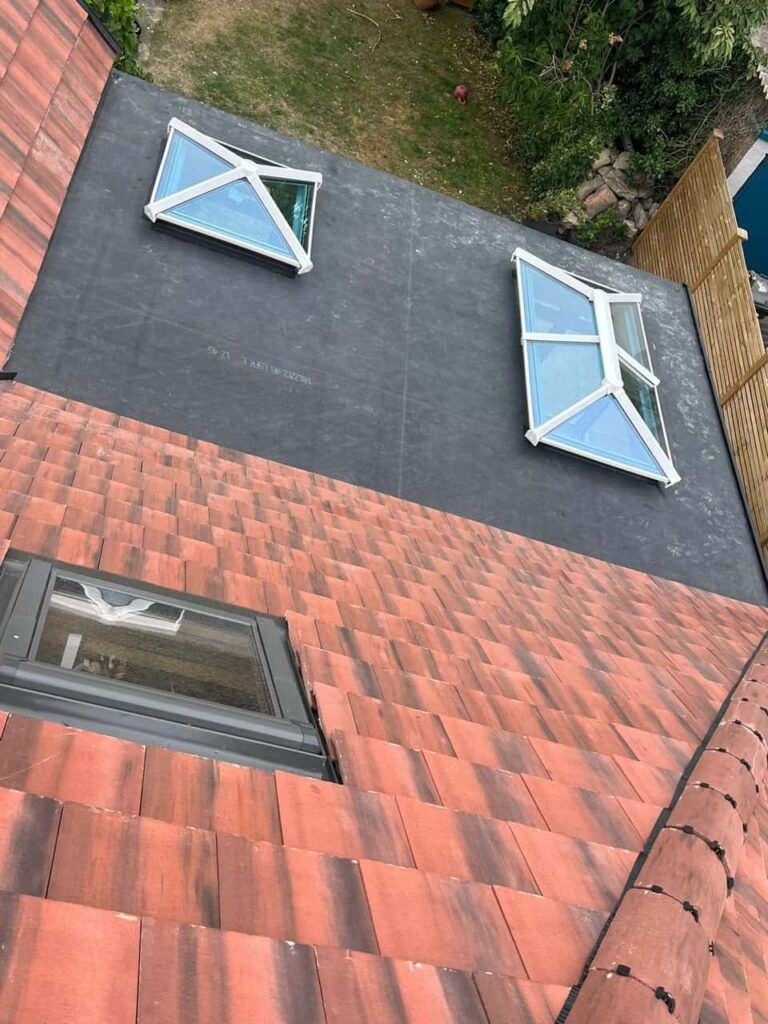Introduction: As winter approaches, homeowners need to be aware of potential roofing issues that can arise during the colder months. One common problem in cold climates is the formation of ice dams, which slipped tiles on your roof can exacerbate. In this blog post, we’ll explore the connection between slipped tiles and ice dams and why addressing both issues is essential for the health and longevity of your roof. At Bingham Roofing Repairs, we’re committed to helping you protect your home from winter’s harsh elements.
Understanding Ice Dams
Ice dams are ridges of ice that form along the eaves of your roof, typically in colder climates. They occur when heat from your home rises and melts the snow on your roof. This melted snow then flows down your roof until it reaches the colder eaves, where it refreezes, forming ice dams.
The Role of Slipped Tiles
Slipped tiles can contribute to the formation of ice dams in several ways:
- Exposed Roof Deck: When tiles slip or become dislodged, they expose the roof deck beneath. This exposed area can absorb heat from your home, causing localised snow to melt.
- Uneven Surface: Slipped tiles create an uneven surface on your roof, which can trap snow and ice. As more snow accumulates in these areas, it can melt and refreeze, contributing to the formation of ice dams.
- Damaged Flashing: Slipped tiles can damage flashing, designed to prevent water infiltration at roof joints. Damaged flashing can allow water to penetrate, further contributing to ice dam formation.
The Connection Between Slipped Tiles and Ice Dams
The presence of slipped tiles can exacerbate the conditions that lead to ice dams:
- Blocked Drainage: Slipped tiles can block the natural drainage paths on your roof. When snow melts, it cannot flow freely off your roof, increasing the chances of ice dam formation.
- Localised Heat Loss: The exposed areas where tiles have slipped can become sources of heat loss from your home. This localised heat can melt the snow and ice, leading to the formation of ice dams.
Preventing and Addressing Ice Dams and Slipped Tiles
To prevent ice dams and address slipped tiles effectively, consider the following steps:
- Regular Roof Inspections: Schedule regular inspections to identify and address slipped tiles and other issues before winter.
- Proper Roof Ventilation: Ensure your attic is ventilated to maintain consistent roof temperatures and minimise snow melting.
- Seal Gaps and Cracks: Seal gaps or cracks in your roof, especially around slipped tiles, to prevent heat loss.
- Professional Repairs: Hire a professional roofing contractor, like Bingham Roofing Repairs, to reposition or replace slipped tiles and address any roof damage.
- Roof and Gutter Maintenance: Keep your roof and gutters clean to ensure proper drainage and prevent ice dam formation.
Conclusion: Slipped tiles can contribute to the formation of ice dams, which can lead to water damage and other roofing issues. Addressing both slipped tiles and ice dams is essential for the health and longevity of your roof, especially during the winter months.
Call us on: 0115 647 1193
Click here to find out more about Bingham Roofing Repairs
Click here to complete our contact form and see how we can help with your roofing needs.

